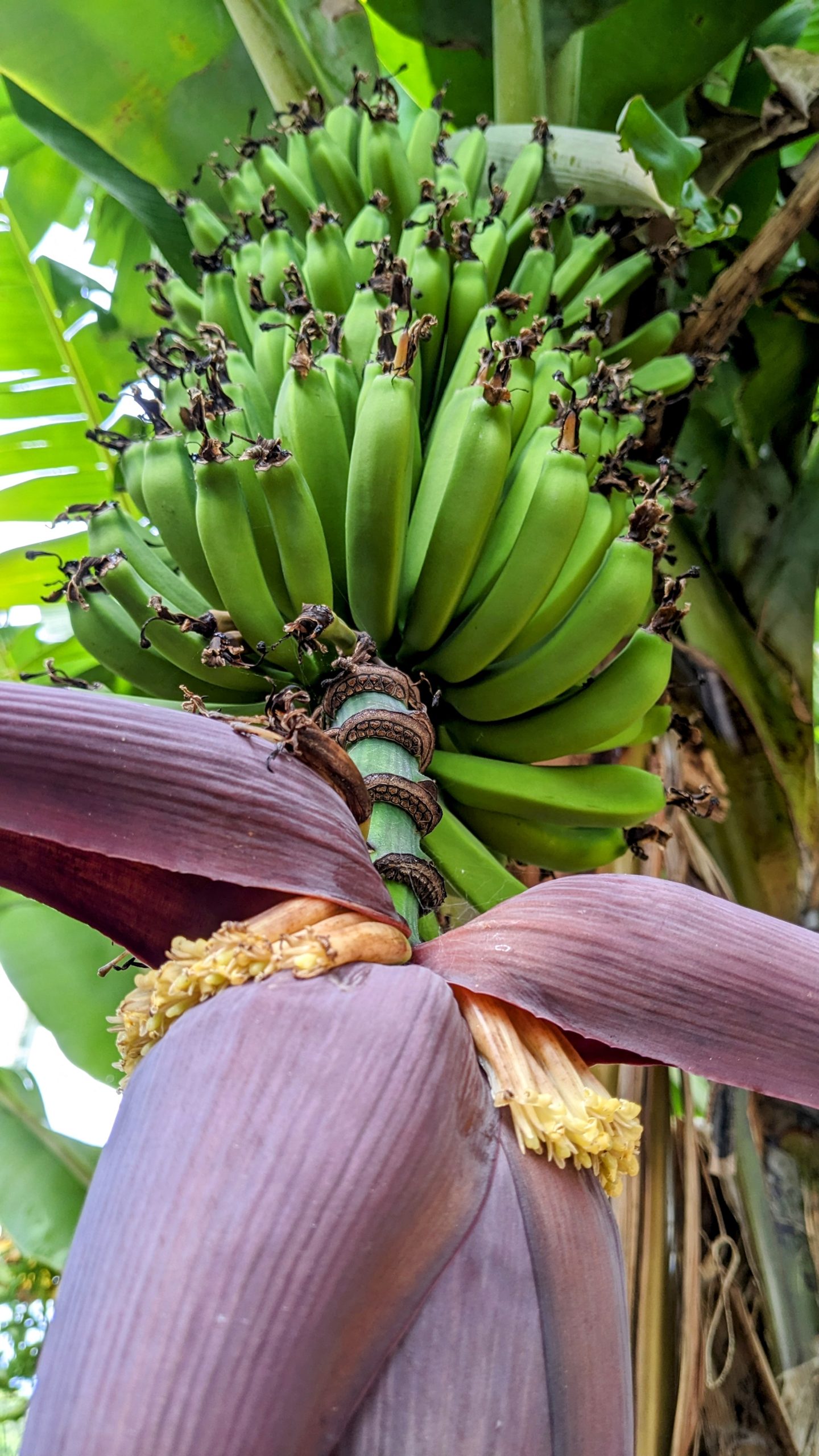Rain heralds next stage for gardens | In Your Patch

Bananas grown here in Margaret River are a perfect example of micro-climate variability, and plenty of examples will be on display at the upcoming Edible Gardens Festival. Picture - Terri Sharpe.
Along comes May, and with it the rain.
We’ve had some decent rains late April and into May so that should see a good start to both garlic and broad beans that you’ve hopefully got into the ground already.
If not, there’s still time.
Garlic don’t like competition and although I’ve seen people suggest companion planting, I’ve never attempted it so can’t comment on its effectiveness.
And I like garlic so much I’m not even tempted to risk it in case it affects my crop.
They do require excellent drainage so if yours is looking a little yellow it may be suffering from wet feet.
By far the biggest issue for me in May is the cabbage moth.
This moth that’s a butterfly will decimate all brassicas if not controlled.
How do I do that I hear you ask?
Dipel.
In my experience it is extremely effective, easy to source from your local hardware, easy to apply but be sure to cover both sides of all leaves, and it’s organic.
It is also only toxic to moth and butterfly larvae, so doesn’t harm any other beneficial insects.
It also has no withholding time (time between application and eating, just wash harvests as you normally would before consuming).
Perhaps the downside is reapplication – it only lasts on the plant a week or so (less if raining), so continual reapplication is necessary.
And don’t bother saving and then using what you’ve previously mixed – it lasts only twelve hours in a mixed state.
If you’re a lazy gardener, it may not be right for you.
What to plant in May?
Asian greens, onions, peas, potatoes, lettuce, broad beans and garlic if not already in, and quite a few of the root veggies.
May is the time to plant tap rooted veggies like beetroots, carrots and parsnip and tuberous roots like potatoes.
Remember that many root veggies do not like to be disrupted so they are not so well suited to seed raising trays, as eventually you’ll have to transplant them.
For this reason, I buy seeds or seed save each year and direct sow into large beds, then thin in a few weeks’ time.
And remember that we can be a bit slower down here in Margaret River than a seed packet or growing guide may suggest.
The time to sow seeds, plant seedlings, and harvest our produce, can all be affected by our local growing conditions.
My point is that there will always be differences in what works in one region, here for example, versus Perth, even though you may find we are all thrown together in planting guides.
Growing guides are a great go-to resource but best used as a guide only, rather than as gospel.
You can even find differences between backyards within the same region, and again even between different areas within one garden.
Micro-climates evolve everywhere.
A great opportunity exists for you to check out exactly this point this month with the Open Edible Gardens Festival on May 20 and 21.
It’s your chance to see what works and what doesn’t for people in our local area.
Well worth a look.
Go to ediblegardensfestival.au for more information.
Happy gardening everyone, and no doubt I’ll see some of you as I visit the gardens open for viewing this month.
What a great opportunity to learn and expand your own edibles knowledge – don’t miss it!
Terri Sharpe is Coordinator and Garden Specialist of the Margaret River PS Kitchen Garden Program.
Her column focuses on tips for a productive edible garden – what and when to plant, when to harvest, disease and pest management, and general tips on what works (and doesn’t) in the Margaret River region.


















